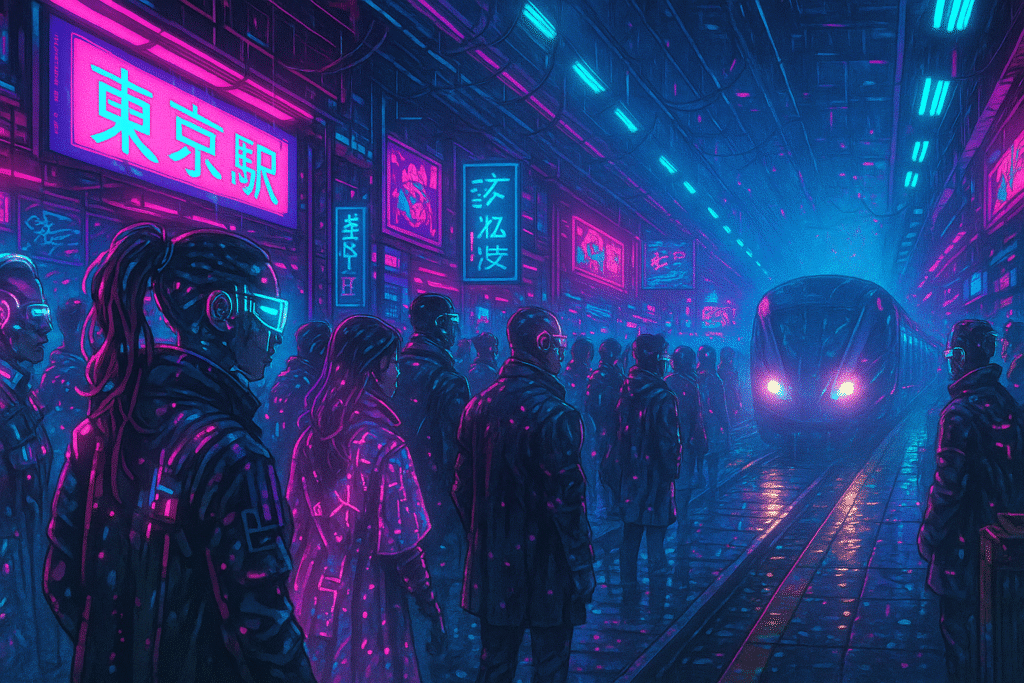A style exploring dystopian futures where advanced technology collides with societal decay.
🧭 Origin
Cyberpunk emerged in the 1980s through science fiction literature (Neuromancer, Snow Crash) and film (Blade Runner), exploring dystopian futures where advanced technology collides with societal decay. It defined a visual language of neon-lit cities, digital decay, and post-human identity.
💡 Inspirations
Asian mega-cities, noir cinema, hacker culture, glitch aesthetics, transhumanism, corporate dominance, cybernetics, and retro-futurism. Influenced by punk rebellion and philosophical questions about identity in a digital age.
🎨 Color Palette
Neon brights on deep blacks, electric and high-contrast (magenta, electric cyan, asphalt black, synth blue)
🖌️ Texture / Technique
Glowing edges, rain-soaked reflections, scanlines, glitch overlays, and sharp highlights. Often layered with dense signage, holograms, chrome, and lens flares. Can be painterly, photographic, or hyper-stylized.
🌀 Shapes & Forms
High-rise skylines, tangled cables, cybernetic limbs, neon signs, data streams, flying cars, and reflective surfaces. Architecture is vertical, cluttered, and built over itself.
🌙 Mood / Atmosphere
Gritty, tense, chaotic, and wired. A world of sensory overload and anonymity — where beauty is found in noise, decay, and electric light.
🧩 Possible Applications
Perfect for concept art, music visuals, fashion lookbooks, dystopian branding, futuristic comics, synthwave campaigns, and AI cityscapes.
🧠 Generative Potential
Perfect for AI generation. Use prompts like “neon-lit cyberpunk city at night with rain and holograms,” or “urban street scene with glowing signage and cybernetic characters.” Works especially well with Midjourney or DALL·E when emphasizing glitch overlays, wet surfaces, and dense color contrast.
💬 Prompt Example
“A neon-lit cyberpunk city street at night, with holographic billboards, rain-slicked pavement, glowing shop signs, shadowy figures in cybernetic gear, and glitch effects in the background.”
